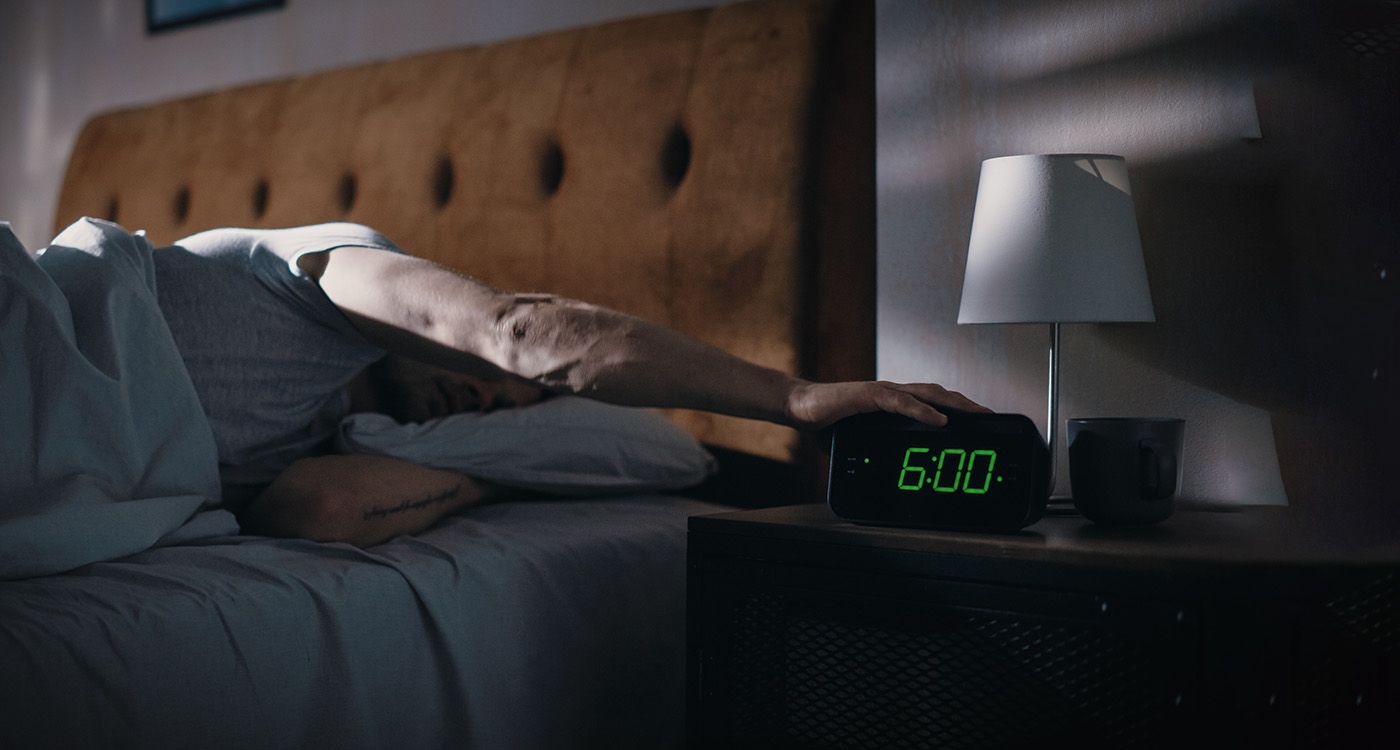
What if our nights were never meant to be uninterrupted? Once dismissed as a disorder, segmented sleep is now regaining recognition. This return to an age-old practice—startlingly relevant today—could change the way we sleep.
For decades, the standard was clear: a good night’s sleep had to be long, uninterrupted and last between seven and nine hours. This is what we call monophasic sleep.
Yet, this way of sleeping is neither as universal nor as natural as we might think. In reality, our ancestors didn’t sleep the way we do, and recent research suggests that segmented sleep, far from being a disorder, may be more in tune with our biology.
Until the 19th century, before electric lighting became widespread, biphasic sleep was the norm. People slept in two phases: a “first sleep” that began at nightfall, followed by a quiet period of wakefulness in the middle of the night, then a “second sleep” that lasted until morning.
This stretch of nighttime wakefulness was often spent reading, praying, meditating or even visiting neighbors. It wasn’t seen as unusual, let alone a sign of insomnia.
Historian Roger Ekirch was among the first to document this forgotten reality, uncovering hundreds of references to “first” and “second” sleep in old letters, diaries and manuals. Segmented sleep wasn’t considered a problem, it was the norm.
This ancestral rhythm gradually gave way as artificial lighting became widespread and work patterns evolved. The night turned linear and compact, and any deviation came to be regarded as a dysfunction.
Segmented Sleep in the Modern World
Today, segmented or polyphasic sleep refers to a pattern of rest divided into multiple segments over a 24-hour period. Unlike monophasic sleep (a single stretch) or biphasic sleep (two periods), polyphasic sleep involves three, four or even six shorter sleep phases, spread strategically throughout the day and night.
This sleep pattern is practiced, whether by choice or necessity, by:
. Single-handed sailors or astronauts.
. Parents of newborns.
. Night shift workers.
. Those experimenting with their bodies or time.
Some extreme variations—such as the Uberman cycle, which consists of six 20-minute naps spread throughout the day—have been experimented with to increase waking hours, but they remain difficult to maintain over time.
The Potential Benefits of Segmented Sleep
Contrary to popular belief, sleeping in multiple segments isn’t necessarily less restorative. Numerous studies show that the key factor is the quality of deep sleep, not strict continuity.
Commonly reported benefits include:
. Better adjustment to irregular schedules.
. Increased alertness and reduced daytime drowsiness thanks to well-timed naps.
. Enhanced deep sleep: certain naps help people enter this phase more quickly.
. Reduced stress linked to nighttime awakenings, which are often seen as pathological in the monophasic model.
. Research involving airline pilots and military personnel has shown that segmented sleep strategies can help maintain cognitive performance in extreme environments.
But caution is needed. Segmented sleep isn’t for everyone, it requires:
. Strict discipline, with consistent schedules to prevent fatigue buildup.
. A suitable environment for rest at multiple times throughout the day.
. A deep understanding of one’s own body and rhythms.
If poorly applied, it can lead to:
. Chronic sleep debt.
. Mood or attention disorders.
. Disruption of the biological clock.
This approach should therefore be handled with care. It is not recommended without medical supervision for those already suffering from sleep disorders.
Reconnecting with Our Biological Clock?
Segmented sleep fascinates today because it speaks to our growing need for flexibility in modern life. Our work rhythms, screen time and irregular schedules disrupt how we relate to rest. The rigid, strictly nocturnal monophasic sleep model no longer always aligns with this reality.
Embracing the idea that sleep can be flexible, and that there isn’t just one “right” way to sleep, means opening up to a more personalized, instinctive approach to rest.
Sleep specialists today are urging us to stop pathologizing certain atypical sleep patterns. Waking during the night, napping or sleeping in multiple phases aren’t necessarily signs of a problem, they can be natural expressions of the body, especially when the person feels rested and functions well during the day.
Segmented sleep challenges our established beliefs. What if the key isn’t to sleep “the right way,” but to sleep according to the needs of our bodies? Rather than imposing a one-size-fits-all model, it’s about listening to our internal signals, adapting to our constraints and accepting that sleep can take many forms.
Good sleep doesn’t necessarily mean eight uninterrupted hours. It’s the kind of sleep that restores, adjusts and allows us to meet the day with full energy.
Main Types of Segmented Sleep
1. Everyman
Structure: One core sleep period + 2 to 4 naps.
Common example:
3 hours of sleep at night.
3 naps of 20 minutes during the day.
Total: Around 4 to 5 hours of sleep in 24 hours.
Advantage: More flexible and generally better tolerated by beginners.
Caution: Requires strict regularity.
2. Uberman
Structure: 6 to 8 naps of 20 minutes, spaced every 4 hours.
No core sleep period.
Total: 2 hours of sleep in 24 hours.
Advantage: Maximizes waking hours.
Caution: Extremely difficult to sustain long-term; often given up after a short period.
3. Dymaxion (inspired by Buckminster Fuller)
Structure: 4 naps of 30 minutes, spaced every 6 hours.
Total: 2 hours of sleep in 24 hours.
Advantage: Extremely short and tightly structured.
Caution: Suitable only for those well-adapted or undertaking extreme experimentation.
4. Biphasic (or Segmented) Sleep
Structure: 2 main sleep periods (e.g., 10 PM–2 AM and 4 AM–6 AM)
Total: 6 to 8 hours of sleep in 24 hours.
Advantage: Historically the most natural; easy to adapt.
Recommended for: Those who wake during the night without feeling tired.
Worth noting: Segmented sleep isn’t a miracle fix, it requires careful testing.
Its effectiveness varies according to each person. It can be useful in specific situations (such as sailing, jet lag or night shifts) but isn’t for everyone.

Comments